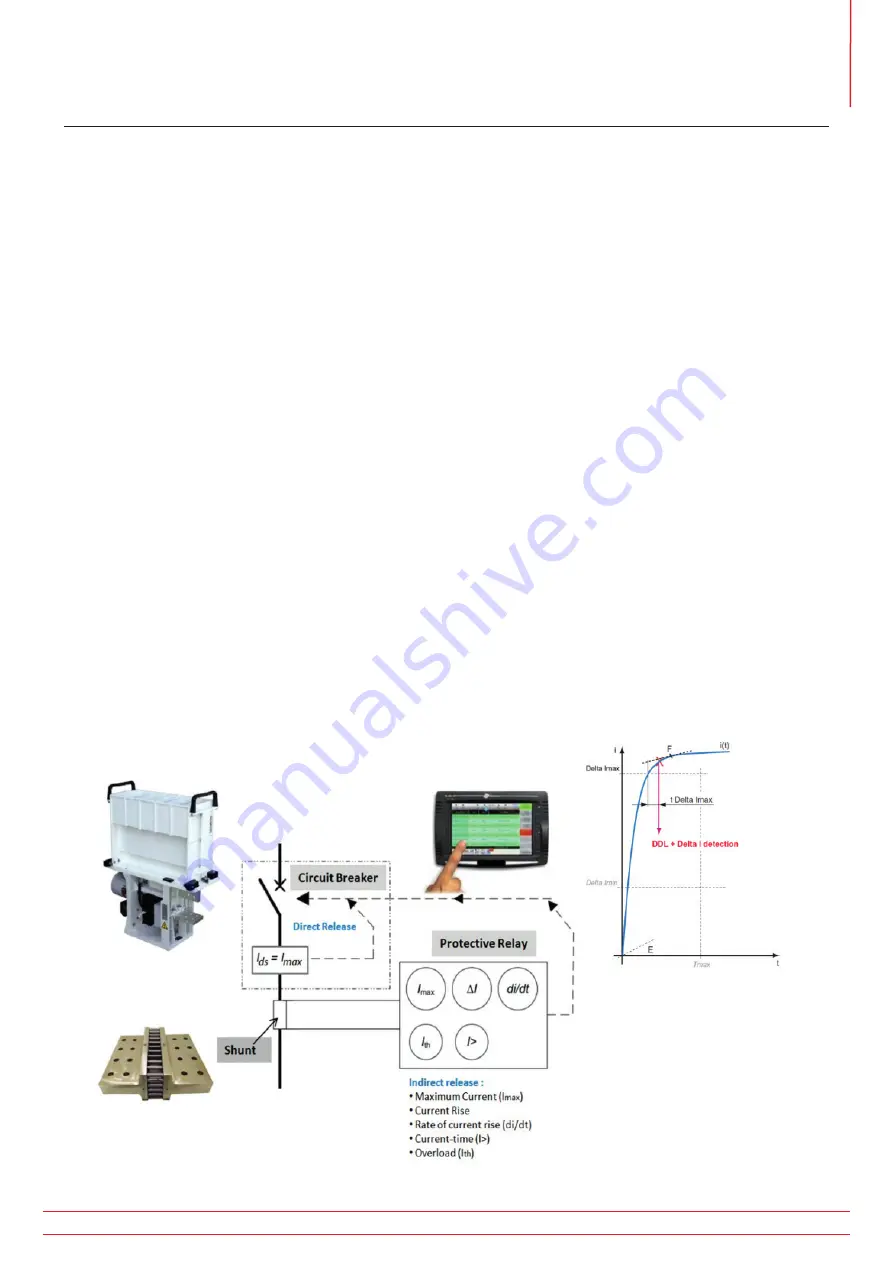
11. Secondary Injection.
11.1 Introduction.
The BALTO PROTECTION TEST module can be used for performing secondary injection testing, i.e. testing of the
protective relay connected to the DC High Speed Circuit Breaker.
Note that a software licence key is required to enable the functionality. Make sure you have the software key at hand
when starting the secondary injection application. Insert the key when prompted for it.
11.2 Principle of operation.
The breaker itself can only trip on its built-in primary release mechanism. This mechanism opens the breaker when
the set current (I
ds
) is exceeded.
Very often a secondary release mechanism is used. This is done by adding a protective relay to the system. The
protective relay receives the information of the current going through the breaker by means of a shunt. The
algorithms running in the protective relay can decide at any moment depending on the current pattern to trip the
breaker.
Typical trip algorithms are :
The current stays too long above a certain level, e.g. 10 seconds higher than 5.000 A
A current rise which is too high at a certain point in time, e.g. 50.000 A/s
In order to test the protective relay, it should be disconnected from the breaker. The shunt input is replaced by the
output of the BALTO PROTECTION TEST module, in this way the BALTO can simulate the output of the shunt. A
trip contact of the protective relay is fed into the trip input of the BALTO PROTECTION TEST module. In this way the
BALTO can register the trip command of the protective relay.
On the next page it is depicted how the protective relay is connected in a live environment and in conjunction with
the BALTO PROTECTION TEST module.
www.megger.com
105
Secondary Injection.






























